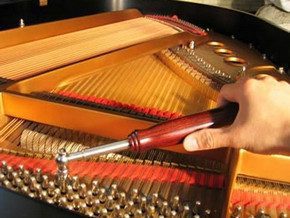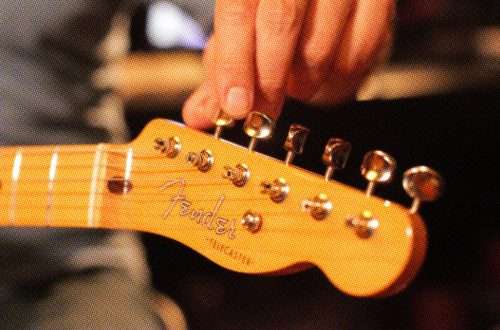
How to tune a piano yourself if there is no tuner 100 km away from you?
 How to tune a piano? This question is asked sooner or later by every owner of an instrument, because fairly regular playing throws it out of tune within a year; after the same amount of time, tuning becomes literally necessary. In general, the longer you put it off, the worse it is for the instrument itself.
How to tune a piano? This question is asked sooner or later by every owner of an instrument, because fairly regular playing throws it out of tune within a year; after the same amount of time, tuning becomes literally necessary. In general, the longer you put it off, the worse it is for the instrument itself.
Piano tuning is definitely a necessary activity. The point here is not only about the aesthetic moment, but also about the pragmatic one. Incorrect tuning significantly affects the pianist’s musical ear, tiring and dulling it, as well as preventing him from correctly perceiving notes in the future (after all, he has to put up with a dirty sound), which threatens professional unsuitability.
Of course, using the services of a professional tuner is always preferable – self-taught people often use insufficiently high-quality instruments, or, even knowing how to tune a piano, they are simply careless about the work, which entails corresponding consequences. However, in some cases, calling a professional is not possible, but configuration is still necessary.
What to arm yourself with before setting up?
It is worth remembering that without special tools you will not be able to tune the piano. The average cost of a tuning kit can reach 20000 rubles. Buying a kit for that kind of money just for one setting is, of course, nonsense! You’ll have to arm yourself with some available means. What will you need before you start?
- The tuning wrench is the main tool needed for mechanical adjustment of the pegs. How to easily get a homemade tuning key, read the article about the device of a piano. Get double the benefits.
- Rubber wedges of various sizes necessary for muting strings. In the case when a key uses several strings to produce sound, when tuning one of them, it is necessary to muffle the others with wedges. These wedges can be made from an ordinary eraser that you use to erase pencil lines.
- An electronic guitar tuner that can make your task much easier.
Setting process
Let’s move on to how to tune the piano. Let’s start with any note of the first octave. Find the pegs leading to the strings of this key (there can be up to three of them) Silence two of them with wedges, then use the key to turn the peg until the string matches the required height (determine it by the tuner) Then repeat the operation with the second string – tune it with the first in unison. After this, adjust the third to the first two. This way you will set up a chorus of strings for one key.
Repeat for the remaining keys of the first octave. Next you will have two options.
The first way: it consists in tuning the notes of other octaves in the same way. However, keep in mind that not every tuner, and especially a guitar tuner, is able to correctly perceive notes that are too high or low, so you can only rely on it in this matter with great reservations (it is not designed for such use). A special tuner for tuning a piano is too expensive a device.
The second way: adjust other notes, focusing on those already tuned – so that the note sounds exactly in the octave with the corresponding note from the first octave. This will take much more time and require good hearing from you, but will allow for better tuning.
When tuning, it is important not to make sudden movements, but to adjust the string smoothly. If you pull it too sharply, it may burst, unable to withstand the tension.
Once again, this setup method does not in any way replace a full setup and adjustment performed by a professional. But for a while, your own skills will help you get out of a difficult situation.





